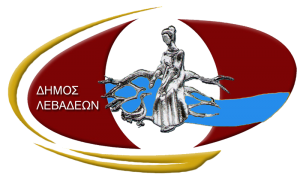The municipality
The Municipality of Levadia is a municipality of the region of Central Greece that was established with the Kallikratis Program by the merger of the pre-existing municipalities of Levadia, Davlia, Koronia and Chaeronia and the Community of Kyriaki. The area of the new Municipality is 698.79 sq.km and its population is 33,152 inhabitants according to the 2011 census. The seat of the new municipality was Livadia.
ADMINISTRATIVE CHANGES
FIRST ENLARGED MUNICIPALITY OF LEVADEA
The Municipality of Levadea was established in 1835 and included, in addition to Livadia, the villages of Sourpi, Granitsa, Pournari and Tsoukalades. In 1840 it was enlarged with the annexation of the villages Romaniko, Arapochori, Bramaga and Velis which until then belonged to the municipality of Chaeronia. The Municipality was abolished in 1912 and replaced by smaller communities.
COMMUNITY OF LEVADIA
The community of Levadia operated in the period 1912-1929. Apart from Livadia, it included the settlements of Pera Chorio, Analipsi (then Sourpi) and Tsoukalades as well as the settlements that were abolished in the following years Gefyraki, Karvouni, Kouroupi and Lykouresi. In 1929 the community of Livadia was recognized as a municipality.
MUNICIPALITY OF LEVADES 1929-1998
The Municipality of Levadia that was established in 1929 came from the recognition of the community of Livadia until then as a municipality. In 1934, the settlement of Analipsi (then Sourpi) was detached from the municipality, which was the seat of the homonymous community until 1953, when it rejoined the municipality. In 1946, the settlement of Agios Meletios was detached from the municipality, which was designated a community seat until 1962, when it rejoined the municipality. In 1974, the settlement of Elikonas, which until then was a separate community, joined the municipality of Livadia.
KAPODISTRIAN MUNICIPALITY OF LEVADEA

The Municipality of Levadia of the Kapodistrias program was established with the Kapodistrias program by the merging of the older municipality of Levadia and the communities of Roman and Lafistia. It bordered with the municipalities of Distomo, Chaeronia, Koronia, Orchomenos and the community of Kyriaki. It consisted of three municipal districts, the municipal district of Livadia, the municipal district of Lafisti and the municipal district of Romeikos. The population of the municipality according to the 2001 census was 21,492 inhabitants. [3]
The Municipality of Levades of the Kapodistrias program included the following municipal districts and settlements.
Δ.δ. Livadia – [20769]
-
- Livadia [20061]
- Saint Nicholas [25]
- the Ascension [184]
- the Helical [43]
- Perachori [279]
- the Station [3]
- the Jimaica [25]
- the Tsoukalades [149]
Δ.δ. Lafistiou – the Lafistio [422]
Δ.δ. Roman – the Roman [301]
KALLIKRATIKA MUNICIPALITY OF LEVADA
From the 1st of January, the unification of the Municipalities of Levadea, Davlia, Koronia and Chaeronia, as well as the Community of Kyriaki was implemented. The respective Municipal Units are structured as follows (in brackets the population during the 2011 Census):
MUNICIPAL UNIT OF LEVADIA
- Municipal Community of Levades [22.193]
-
- the Livadia [21379]
- the St. Nicholas [33]
- the Ascension [169]
- The Upper Sourpi [0]
- the Helix [31]
- the Perachorion [325]
- the Station [17]
- the Jimaica [118]
- the Tsoukalades [121]
-
- Local Community Lafystiou – the Lafystio [354]
- Local Roman Community – the Roman [232]
MUNICIPAL UNIT OF DAVLIA
- Local Community of Davlia [1.240]
-
- the Davlia [1232]
- the Monastery of the Assumption of the Virgin Jerusalem [8]
-
- Mavroneri Local Community [218]
-
- the Mavronerion [214]
- the Davlias Station [4]
-
- Local Community of Parorio – Parorion [228]
MUNICIPAL UNIT OF KORONIA
- Municipal Community of Agios Georgios – Agios Georgios [1,693]
- Local Community of Agia Anna [261]
-
- the St. Anna [226]
- the Jellyfish [27]
- the Monastery of Saint Seraphim Domvous [8]
-
- Agia Triada Local Community – Agia Trias [652]
- Local Community of Mutton [178]
-
- the Alalkomenai [83]
- the St. Athanassios [95]
-
- Local Community of Koronia [386]
MUNICIPAL UNIT OF KYRIAKI
- Municipal Community of Kyriaki [2,298]
-
- the Sunday [2.185]
- the St. Athanassios [11]
- the Karioti [12]
- the Virgin Kalamiotissa [73]
- the Hock [17]
-
MUNICIPAL UNIT OF CHAERONIA
- Local Community of Chaeronia – Chaeronia [556]
- Local Community of Agios Vlasios – Agios Vlasios [212]
- Akonti Local Community – Akondion [127]
- Local Community of Anthochori – Anthochorion [207]
- Local Basilica Community – the Basilicas [38]
- Thorium Local Community – Thorion [127]
- Prosilio Local Community – Prosilion [33]
- Local Community of Prophet Elias – the Prophet Elias [82]
LAW 4555/2018 – GOVERNMENT GAZETTE ISSUE A ‘133 / 19.07.2018 – PROGRAM “CLOSED I”
The Municipality of Levadia was established with its seat in Livadia, consisting of the municipalities of a. Levadians b. Chaeronia c. Davlias d. Koronia and the community of Kyriaki, which are abolished.
Historical data
 According to a tradition, the city was formerly called Mideia and was built on a hill. It was later renamed Levadia by the Athenian Levados, who settled the inhabitants in the plain.
According to a tradition, the city was formerly called Mideia and was built on a hill. It was later renamed Levadia by the Athenian Levados, who settled the inhabitants in the plain.
In historical times, Livadia was famous for the ancient oracle of Trophonius , which had been visited and consulted by Croesus, Mardonius, Emilius Paul and others. He took part in the Boeotian public and followed the fate of the other Boeotian cities. It was one of the cities of the Boeotian Federation in the 8th century. e.g. In 395 BC. was looted by Lysander and in 86 BC. from Mithridates, but experienced particular prosperity during the 2nd AD. century.
The ancient city was built on the right bank of Erkyna , and its ruins came to light after excavations. Most (bath, market, street, register) as well as a large number of inscriptions date from the 4th BC. until the 3rd AD century. However, the most important archeological site of the area is the ruins of the Temple of Zeus King that dominates the adjacent hill of Ai-Lia.
The sacred grove, which Pausanias describes in more detail, operated until the abolition of pagan rituals by Theodosius AD. Inside the grove, apart from the sanctuary of Trophonios, there were places or buildings dedicated to the worship of Good Luck, the Good Demon, Artemis, Hermes, Dionysus and deities of childbirth. There was also the tomb of Arkesilaos, sanctuaries of Apollo and Demeter, as well as a semicircular temple of Zeus King, in whose honor the Kingdom of Panamos was celebrated during the month of Panamos, a celebration with races and processions of cannibals established in 371 BC. in remembrance of the victory of the Boeotians at Lefkra.
Byzantine period
During the first centuries of the Byzantine period, the city of Livadia did not show much development. He followed the fate of the Eastern Illyrian between East and West in both political and ecclesiastical changes until his final ecclesiastical subordination to the jurisdiction of the patriarchate of Constantinople.
The rural economy of the city faced serious problems from the barbaric invasions of the 4th and the beginning of the 5th century, and during the transition period of the 7th century. During the administrative reform, with the introduction of the institution of “issues”, it became part of the issue of Greece and from the 9th century experienced significant economic development within the framework of the general economic progress of the issues of Greece.
The economic prosperity of the city of Thebes favored the prosperity of Livadia until the middle of the 12th century, but the Norman raids weakened the cultivation and silk industry in the wider region and restricted trade.
Frankish rule – Turkish rule – Modern times
After the occupation of southern Greece by the Franks of the Fourth Crusade (1204), Livadia was ceded to the “lord of Athens” Otto Delaros and, a century later, after the defeat of the Franks by the Catalans at the battle of Kifissos (1311), the inhabitants handed over the castle of the city to the victors in exchange for the concession of privileges. Catalan rule continued under the rule of King Frederick of Sicily until May 1388, when the area of the “Duchy of Athens” passed to Nerios Atzagioli, a member of a Florentine banking house.
Two years after the surrender of Athens to Mohammed II the Conqueror (1458), Livadia came under the Ottoman Empire and was a kaza, which until 1470 belonged to the santzaki of Trikala and later to the santzaki of Evripos. In the 16th century, Livadia was a haven for Ottoman officials, and from the third or fourth decade of the 17th century it was the vakuf of Mecca or, according to others, of Medina. In the 18th century the income of the kaza of Livadia was dedicated to the Geni-Mosque of Skoutari, which was founded by the wife of Sultan Mehmet IV.
Despite the devastation that Livadia had suffered from the war in Boeotia during the Turko-Venetian war of 1684-1699 and specifically in 1694 and 1695, from the beginning of the 18th century the conditions that had formed helped the development of economic activity: After the dedication of the income to the Yeni-Mosque, the inhabitants were granted privileges, resulting in the strengthening of the community institution and the creation of a class of lords. The voevoda could not make any decision without the consent of the kotzambasids. About ten families constituted the aristocracy of the land and the city, whose sympathy could not be broken by Ali Pasha, despite the pressure he exerted on the kaza of Livadia. Thus the city, which at the end of the 18th century was characterized as “the largest in Boeotia”,
Despite the fact that the flow of migration was limited, men from Livadia who distinguished themselves in the Greek communities of Russia and Central Europe came from. Apart from Lambros Katsonis, clergymen, scholars and merchants of the Diaspora came from Livadia and its region.
On the eve of the Revolution, Giaur Livadia, as the Turks called it for its large Greek population, had 10,000 Greek inhabitants, who engaged in agriculture, trade and handicrafts. In 1820 the city was the center of the activities of the Friendly Society, to which its nobles had been initiated. Athanasios Diakos, who had taken over the command of the weapons of Livadia, in collaboration with his companion Vassilis Bousgos and with the distinguished Ioannis Logothetis, Ioannis Filonas and Lambros Nakos, prepared the uprising. On the night of March 28-29, the rebels had gathered on the hill of Prophet Elias. And when the Turkish commander Hasan aga rejected Diakos’ proposal for surrender, the attack began. On March 31, the Turks, who had been locked in the Hera tower, surrendered on April 1,
During the Revolution the city was repeatedly tested by the Turkish armies heading to the Peloponnese, and the last battles of the Struggle were fought in the area. During the operations of 1828 in Eastern Sterea led by Dimitrios Ypsilantis, the Turks who were in Livadia were besieged by the body of Vassos Mavrovouniotis and by a naughty cavalry, and on November 5, 1828 they surrendered the city. A new Turkish corps under Mahmut Pasha recaptured Livadia, but was forced to leave on February 8, 1829, to avoid siege. Immediately Livadia began to be rebuilt. The inhabitants who had taken refuge in other areas returned, the operation of the school began with the care of Kapodistrias, and in 1841 the city was one of the strong economic centers of the modern Greek state.






